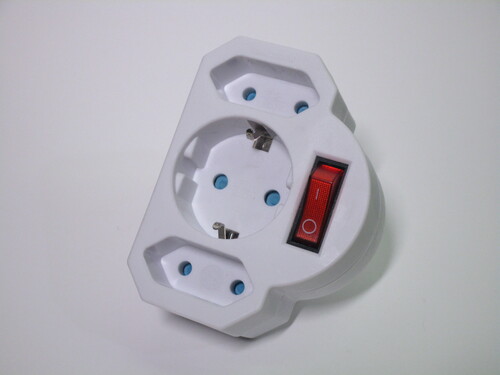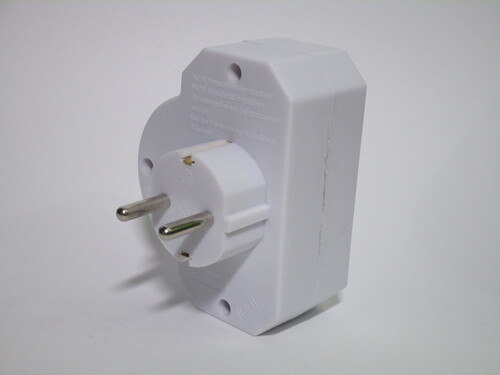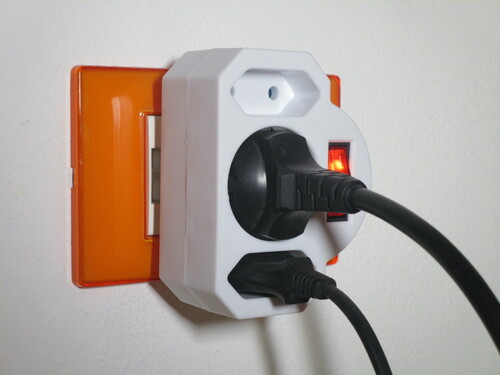Schuko plugs and sockets
Busch-Jaeger Schuko sockets
Rating: 16A 250V
These are two common types of Schuko sockets, made by German manufactuer Busch-Jaeger. Both are single sockets, though they can be joined with other devices by using a different faceplate. They're mounted to a standard European wall box, either using screws or, in older installations, metal arms ("claws") that push outwards.
After removing a screw on the front, the cover plate can be taken off, revealing the wire connections. These are of the screwless type: the wires, which have to be solid core, are installed just by pushing them into the terminals. They can later be removed by pushing on a plastic lever, which is designed to also cover the live parts of the socket for safety.
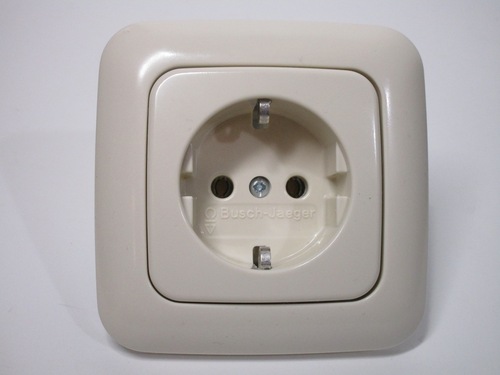
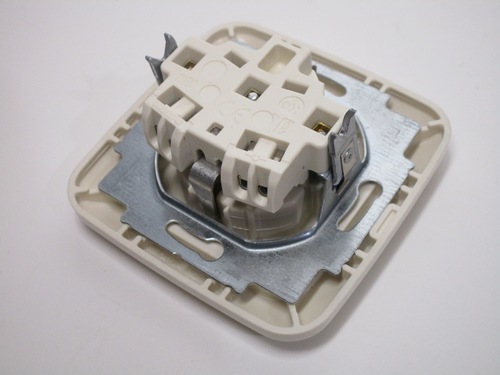
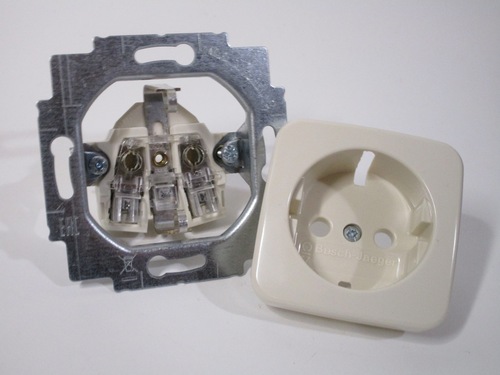
The second socket is constructed basically identically to the first one, just with a more modern-looking faceplate - and safety shutters. Shutters aren't mandatory in Germany (and countries that adopted similar electrical standards), however they are a requirement in Denmark, Italy and Norway.
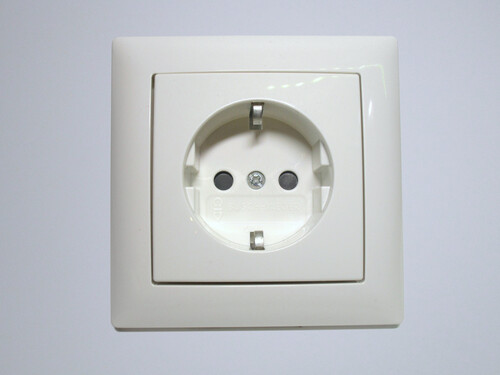
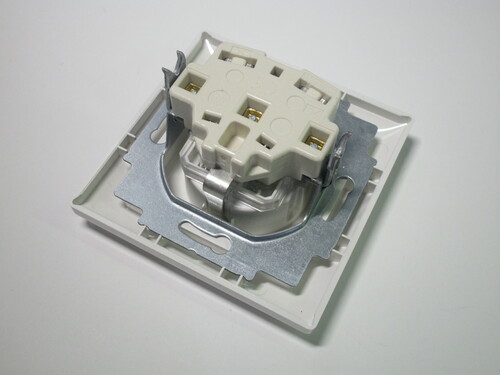
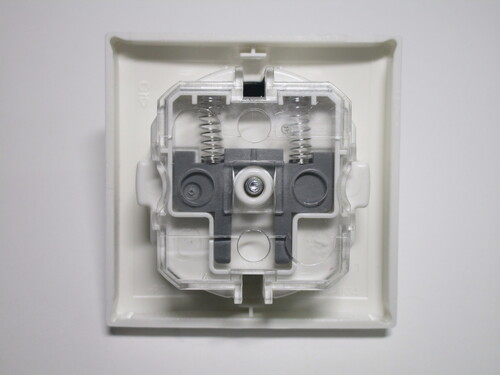
Standard Schuko plugs
Most earthed appliances come fitted with a moulded-on CEE 7/7 plug, compatible both with Schuko and French-style sockets. CEE 7/4 plugs, which look similar but lack the hole for the earth pin on French sockets and thus can only fit in Schuko ones, are nowadays only found in the form of rewireable plugs sold in hardware stores.
Both moulded-on and rewireable plugs (but especially the former) are available in versions with the cord coming out of the side; these tend to look better and are easier to conceal behind furniture, but have the disadvantage of being harder to remove. As such, they're usually found on items that tend to be plugged in most of the time.
Additionally, there's a third style of plug, the CEE 7/17 "contour plug". These are similar to CEE 7/7 ones, but lack an earth connection. They're found on high-power appliances that don't need to be earthed, such as hairdryers and space heaters. For low-power devices, Europlugs are very frequently used.
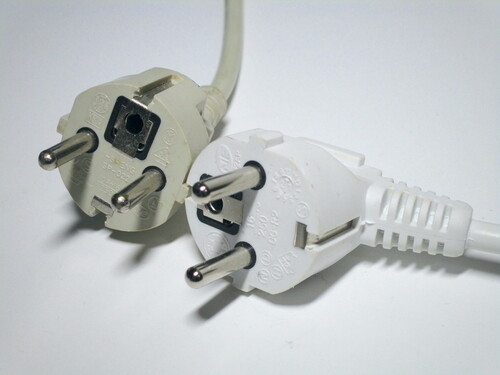
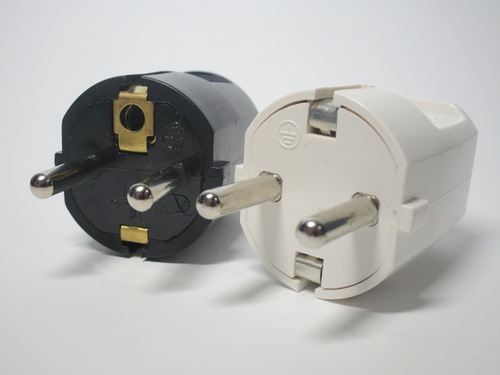
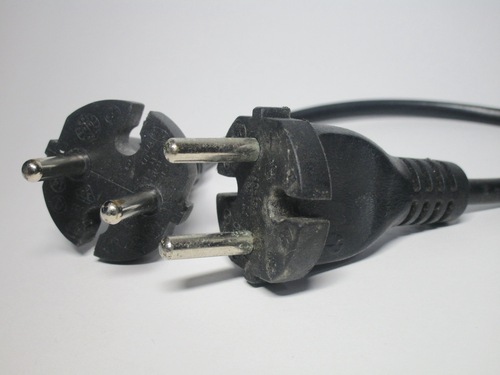
Dual Schuko socket
Rating: 16A 250V
Dual outlets are a useful way to get two power sockets in a single wall box, which can otherwise only fit one. This is done quite cleverly, by placing the contacts within the area of the wall box; this way, the front cover only has to protrude by a small amount, to fit the recess needed by Schuko sockets.
This partiular example has been built by Legrand as part of the Niloè series and is built entirely out of plastic, making it feel a bit cheaper. Wire connections are done with classic screw terminals. Interestingly, the front cover is held both with screws and by being clipped on.
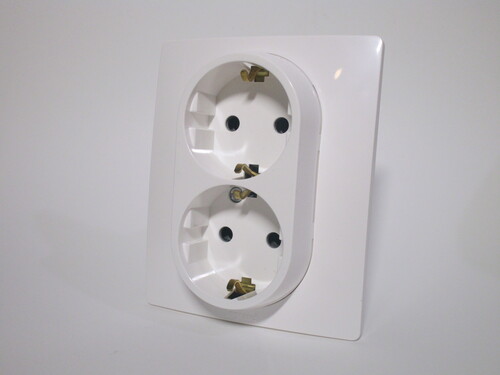
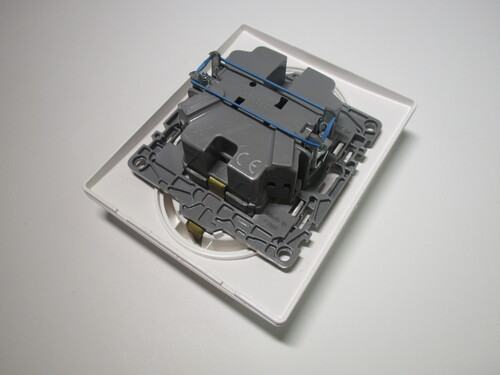
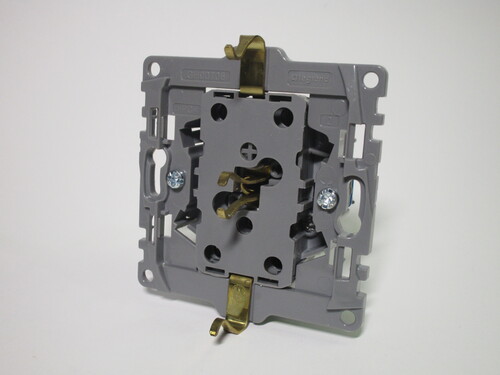
Rewireable plug from Legrand
Rating: 16A 250V
This is an example of a rewireable Schuko plug, specifically of the CEE 7/4 type. Wiring it up is simple: after removing one screw, the casing is opened; the wires are screwed into the terminals and the cord is then secured using the built-in strain relief.
Rewireable plugs are handy for building or fixing an extension cord or power strip, repairing an appliance, or, when using higher-end plugs, to improve the look of an installation.

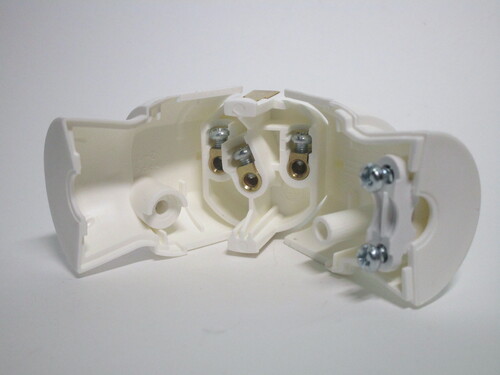
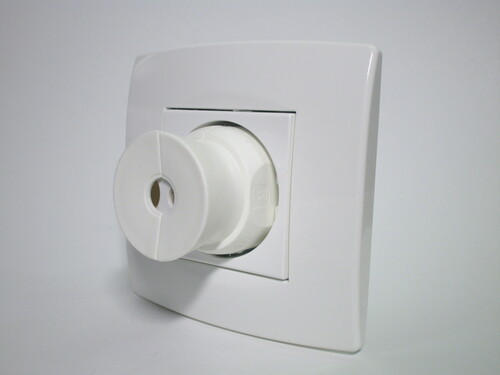
Plug with side-entry cord
Rating: 16A 250V
While not very common, there are also rewireable plugs available with a side entry cord. These are especially useful to hide behind furniture, but also just for aesthetic reasons, since having the wire closer to the wall tends to look better.
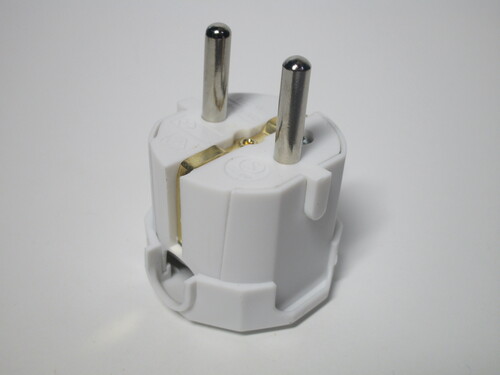
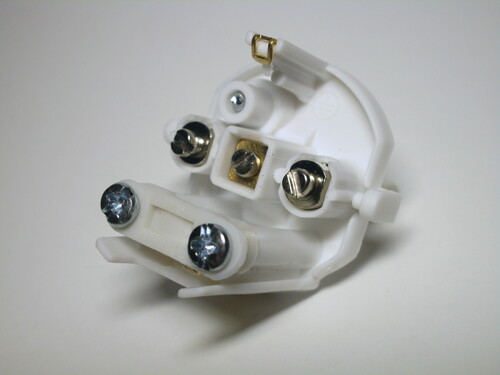
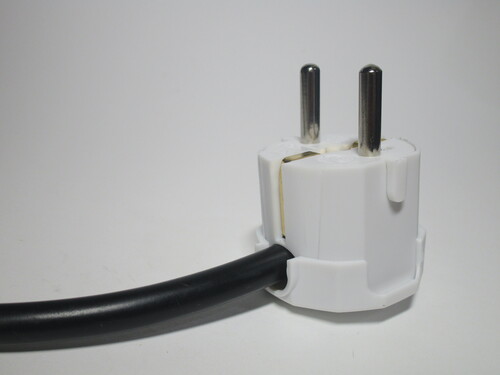
Connector socket
Rating: 16A 250V
This is a connector socket, used to build extension cords. Like many of the sockets shown here, it doesn't have safety shutters. Taking it apart is done by removing a screw and sliding the internals out of the outer plastic shell.
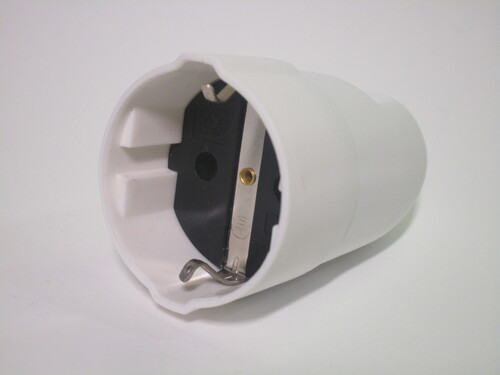
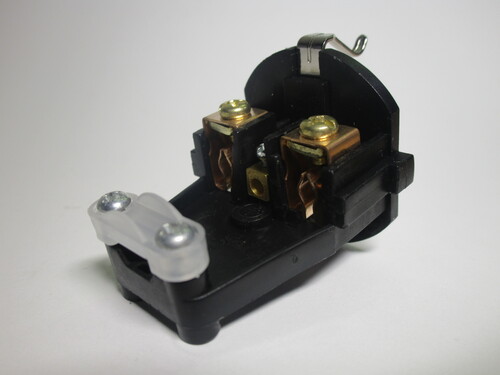
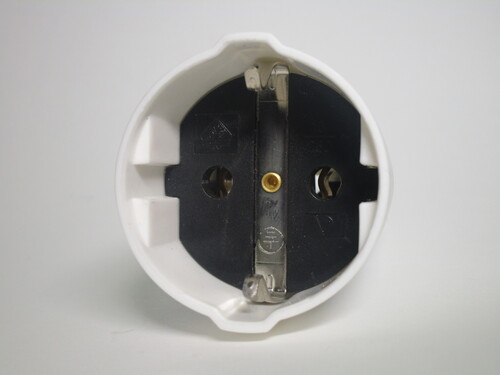
Plug with switch
Rating: 16A 250V
This rewireable plug has the interesting feature of having a built-in double-pole switch. This might be useful in situations where the appliance might not have a power switch, or if it's in a spot that's hard to reach. The use of a double-pole switch makes sense, as it ensures that the appliance is entirely isolated from the supply once the switch has been set to the off position.
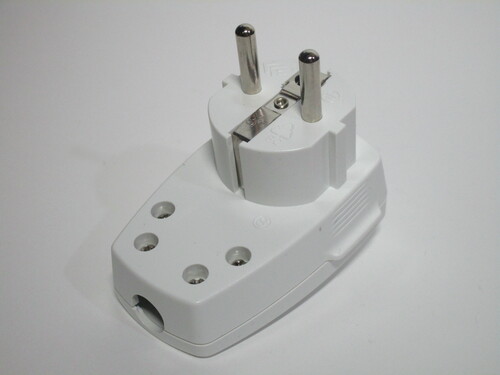
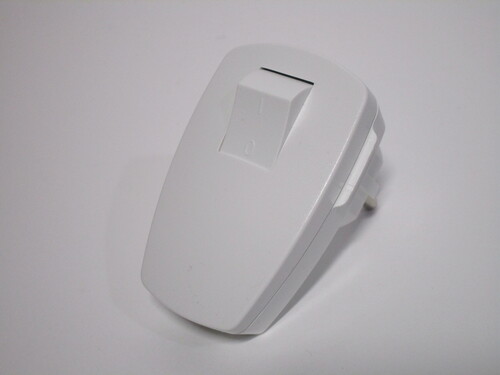
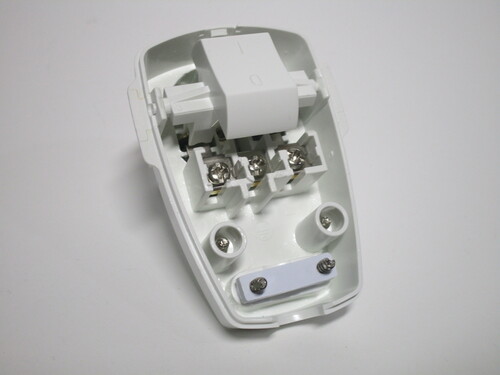
Surface-mount IP44 socket
Rating: 16A 250V
Surface-mount sockets like this one tend to be found in places like garages or workshops, where surface wiring tends to be more frequently used due to its flexibility and ease of installation. This specific example is IP44 rated, which means it can resist light splashes. Because of this, a spring-loaded lid is present.
Two removable rubber grommets are present on the top and bottom, which can be punched through to fit a cable or conduit. The wire terminals are of the older style with screws.
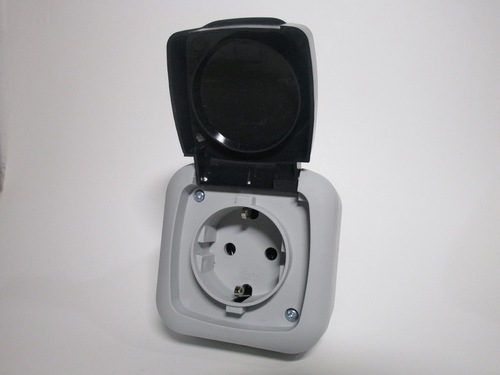
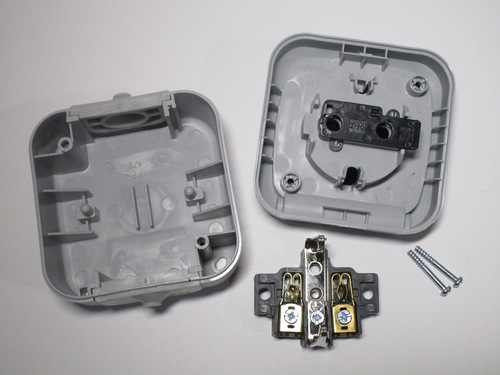

Surface-mount Busch-Jaeger socket
Rating: 16A 250V
This small surface-mount socket is more suitable for use inside the home; it's built very well, as is typical of this manufacturer. The outer casing is made out of a single piece of plastic, which then screws onto another piece which holds the contacts; the latter is also where the holes for the mounting screws are placed.
Unusually, the terminals aren't of the screwless type; this is to be expected on cheaper sockets like the one shown previously, but it's a bit strange to see on a new Busch-Jaeger item.
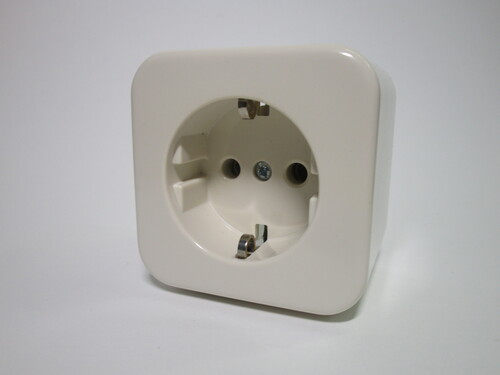
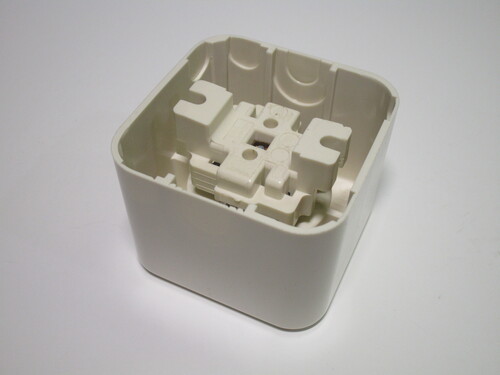
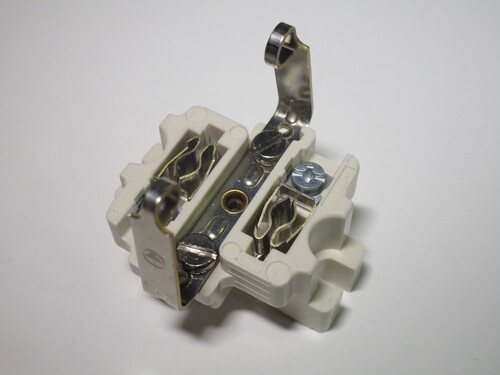
Triple socket by Kopp
Rating: 16A 250V
This surface socket is interesting primarily due to its unusual triangular shape. Unfortunately, after a quick look, its build quality is rather disappointing. The casing is rather flimsy, and the contacts are unreliable, with one of them being loose right from the factory.
This problem is caused by the contacts not having any way to be pushed back together after a plug is removed, which can make them loosen over time. Better sockets have an additional piece of metal next to each contact, which acts as a spring and prevents such an issue from occurring.
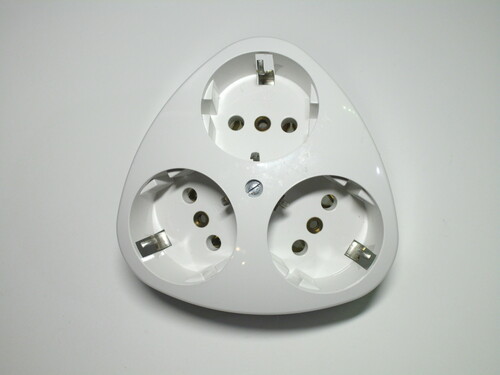
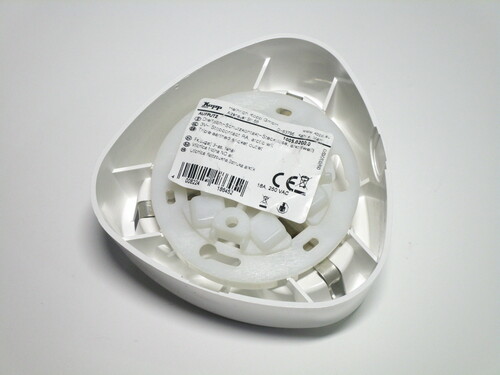
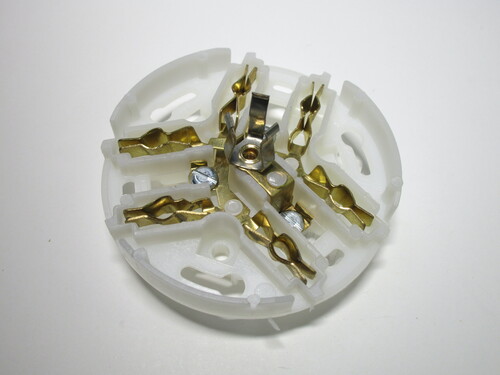
Socket with built-in light switch
Rating: 16A 250V
When using surface wiring, it's natural that items like this one may be needed: it's a simple Schuko socket combined with a light switch. This model is a particularly cheap one, though there are higher-end versions too.
The line terminal of the socket and switch are often joined together (and in some other items this is already done at the factory), so that the light may be powered from the same circuit as the socket. This also means that only a 4-core cable has to be used.
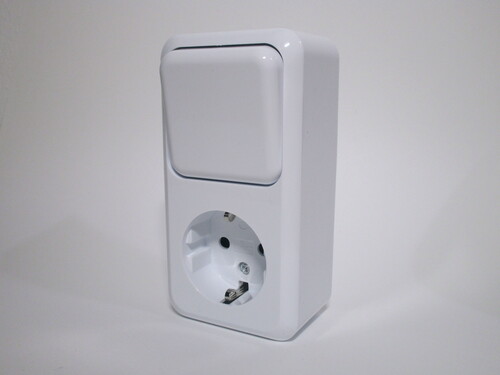
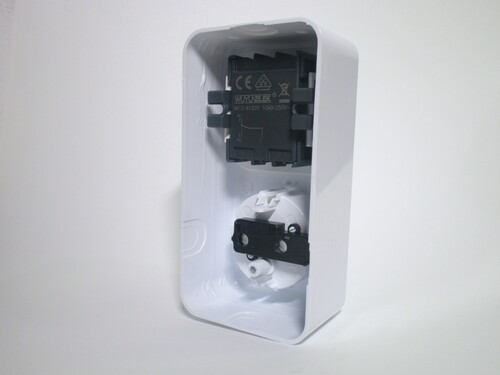
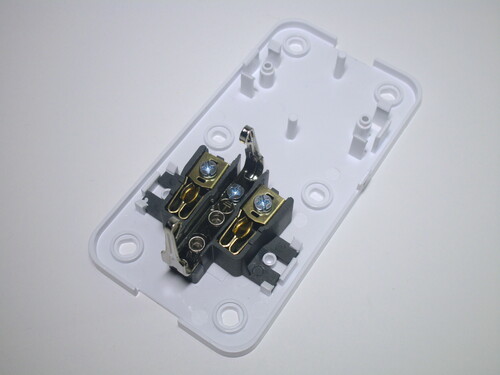
Vintage Schuko plug
Rating: 10A 250V
This is a vintage Schuko plug, made by Presto and built out of brown bakelite. Unlike certain other plug standards around the world, there hasn't been a substantial redesign of Schuko plugs over time, so there isn't much that sets this plug apart from ones used nowadays. However, there are still some defining features to point out: the lower rating of 10A was common in the early days of Schuko, and the pointy pins are quite unusual.

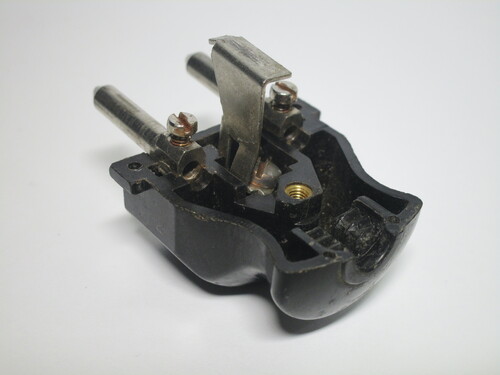
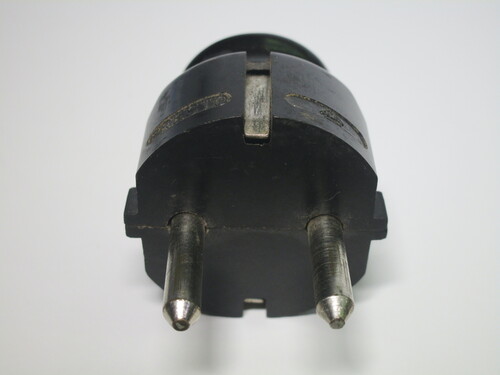
East German plug and connector socket
Rating: 10A 250V (socket), 16A AC / 10A DC (plug)
Electrical items made in East Germany are always fascinating; in particular, this is a plug and mactching connector socket built in the GDR.
The tell-tale sign that these items were manufactured there is the presence of the "quality marks" [more info] moulded onto the plastic casing, which indicated if the product was suitable for export or only for use inside the country. Both of these have a rating of "1", which indicates a high quality product.
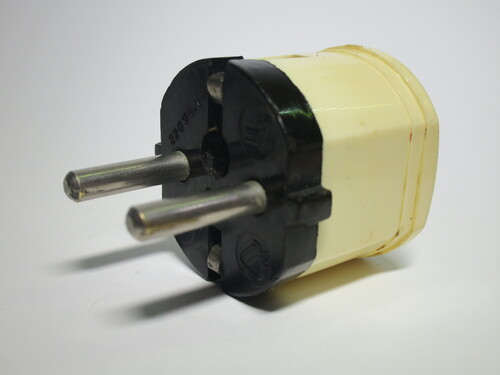
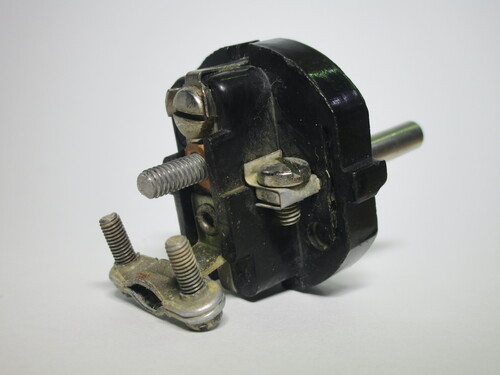
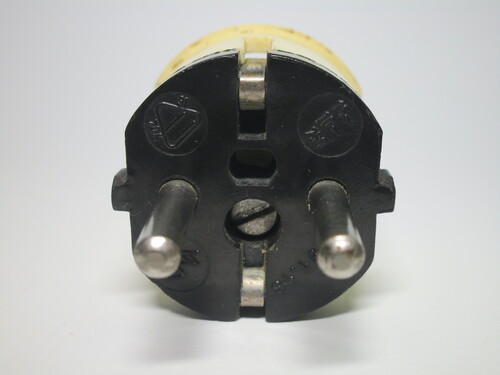
A somewhat interesting feature of the connector socket is the strain relief, which is a metal piece that also acts as the wire terminal for the earth connection. It's connected to the earthing clips at the front using a rivet and a solder joint, which have loosened over time.
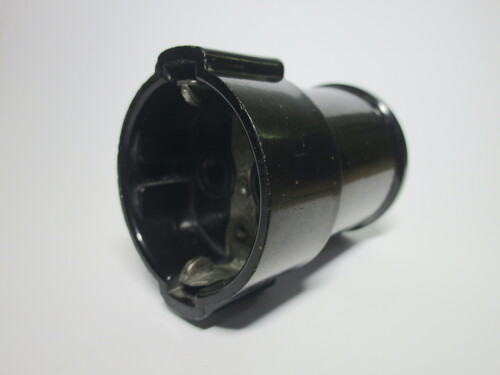
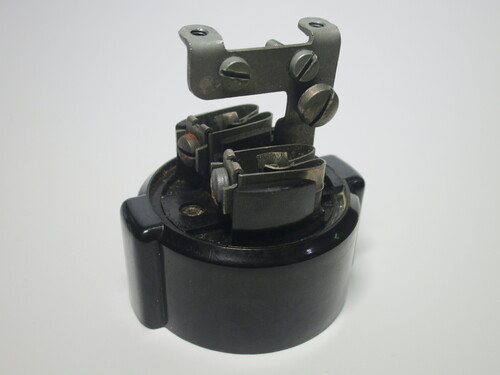
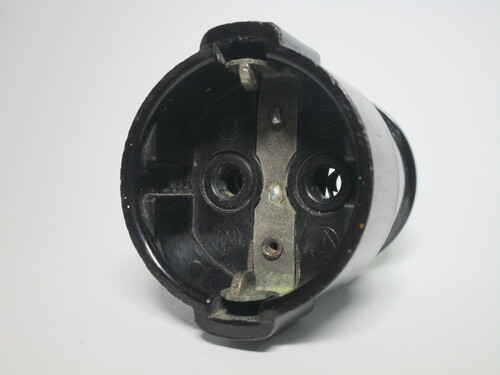
Multiway adaptors
Rating: 16A 250V
These are two examples of Schuko multiway adaptors, used to connect multiple devices at the same time. The first one, given the size of Schuko outets, is quite large, with three sockets arranged in a "T" shape.
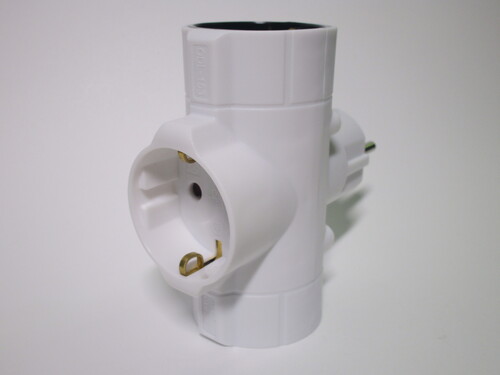
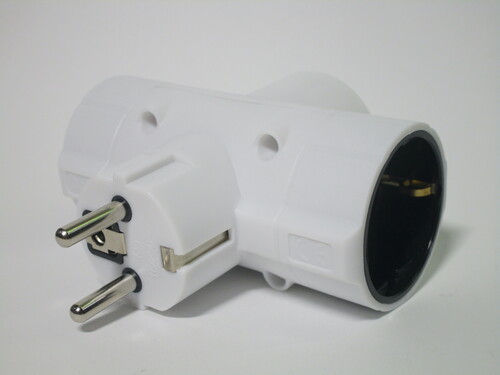
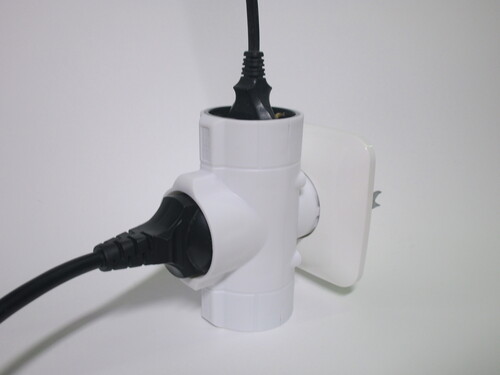
The second adaptor is smaller than the previous one, as it only has a single Schuko socket and two (much more compact) ones meant for Europlugs. It also features an illuminated switch to turn the power off, almost like a mini power strip.
